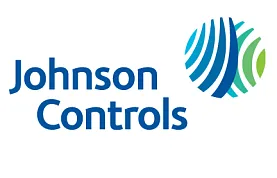Thirty years since the founding of EPA’s first voluntary climate initiative, Green Lights, the U.S. Environmental Protection Agency (EPA) is celebrating the legacy and impacts of its highly successful climate partnership programs. Through these programs, tens of thousands of public - and private-sector organizations have joined forces with the government and prevented more than 6 billion metric tons of greenhouse gas emissions from nearly every sector of the economy - a total which exceeds all U.S. carbon dioxide emissions in 2019.
EPA’s Climate Partnership Programs have spurred billions of dollars of private sector investment in energy efficiency and clean energy. They have produced significant economic benefits, helping Americans save more than $500 billion while driving investment and creating jobs. In fact, in 2019, the more than 800,000 Americans employed in manufacturing or installing ENERGY STAR certified equipment accounted for roughly 35% of all energy efficiency jobs.
"Today we celebrate 30 years of collaboration through EPA’s Climate Partnership Programs, started by former Administrator Reilly,” said EPA Administrator Michael S. Regan. “The success of these programs proves that a united approach - bringing government, business, and market forces together - can help tackle the climate crisis while also creating jobs and building our economy back better.
We commend the innovation, drive, and collaborative spirit of our partners, whose efforts are creating a healthier environment for us all.” “When we launched Green Lights in 1991, the idea of EPA partnering with businesses was still somewhat radical,” said former EPA Administrator William K. Reilly. “Today, the success of EPA’s climate protection programs demonstrates the ongoing power of partnership. Indeed, these programs have become critical tools to broaden and diversify its climate approach.”
EPA has more than two dozen voluntary climate programs, all of which work hand-in-hand with the private sector and others to achieve more than would be possible through federal regulations alone. These programs seek out and overcome market barriers, drive policy at the state and local level, and capture and channel marketplace ingenuity towards climate action. Their unique capabilities will be critical in fulfilling our national commitment to reduce economy-wide greenhouse gas emissions by 50% from 2005 levels by 2030, achieve 100 percent carbon-pollution free electricity by 2035, and reach net-zero emissions economy-wide by no later than 2050. In 2019 alone, the programs’ reductions were equal to 8 percent of total U.S. greenhouse gas emissions.
The success of these climate protection programs demonstrates the value of partnership, not just for our environment, but also for our economy, and underscores the critical role that partnership programs will play at EPA in helping to achieve our national climate goals. For example, more than one-quarter of all U.S. commercial building stock works with EPA’s ENERGY STAR program to measure, track, and improve energy efficiency using the program’s 1-100 rating system. Companies who’ve partnered with EPA’s Green Power Partnership are driving up demand - now accounting for nearly 40 percent of all voluntary green power purchases. And 30 percent of supermarkets work with EPA’s GreenChill program to reduce refrigerant emissions. Other programs include the State and Local Climate and Energy Program, AgSTAR, the Coalbed Methane Outreach Program, the Landfill Methane Outreach Program, Natural Gas STAR, Methane Challenge, the SF6 Reduction Partnership for Electric Power Systems, SmartWay Transport Partnership, the Responsible Appliance Disposal Program, the Combined Heat and Power Partnership, and the Center for Corporate Climate Leadership.
